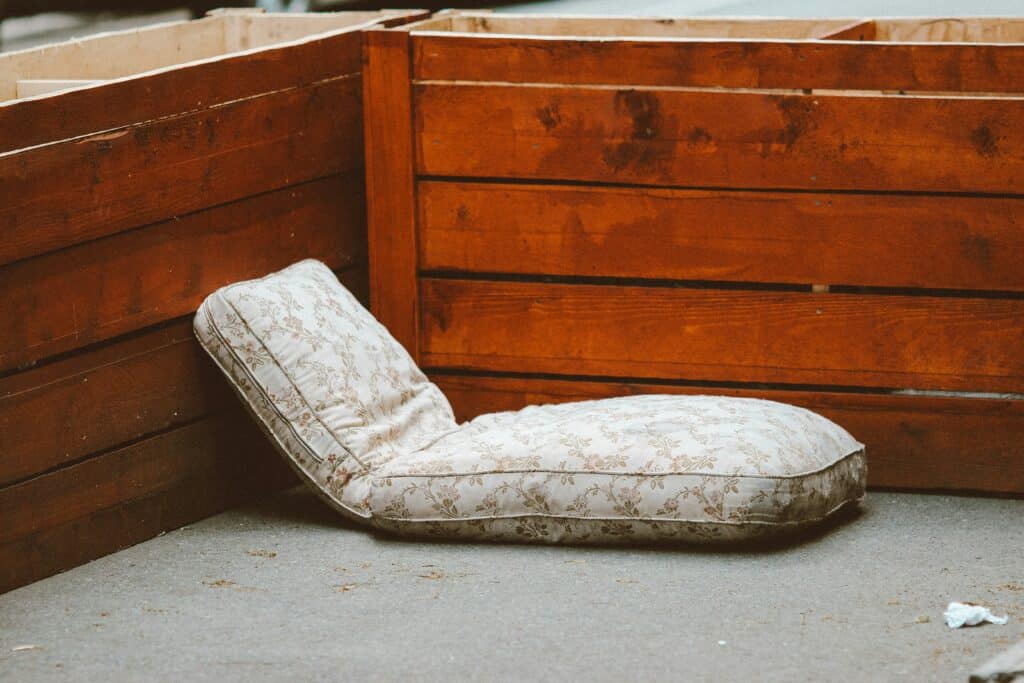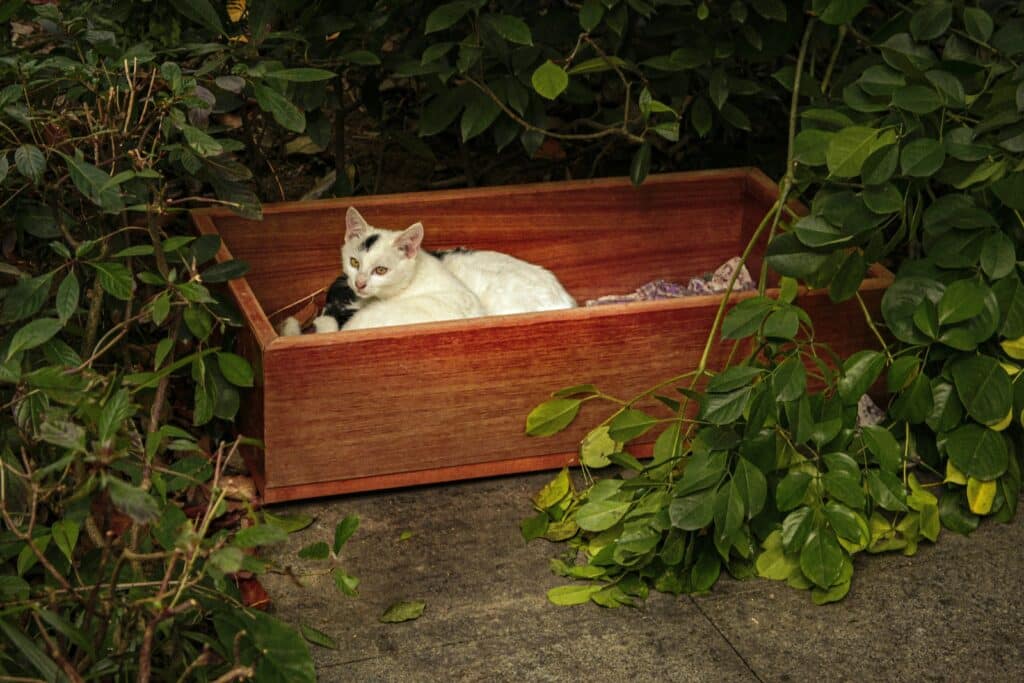This innovative concept not only serves as a unique way to repurpose forgotten pieces but also elevates your garden’s aesthetics to a whole new level. An old drawer, with its quaint and worn-out look, can be transformed into an extraordinary vintage garden bed, making your green corner stand out.

Creating a garden bed out of an old drawer is not just about having a vintage touch, but also about being sustainable and eco-friendly. Instead of discarding old furniture, turning them into something functional like a garden bed is a perfect way to reduce waste. The process of transforming an old drawer into a garden bed is simpler than you might think and opens up a new world of possibilities for your garden design.
Throughout this comprehensive guide, you will discover the step-by-step process of creating your own old drawer garden bed, offering you the opportunity to inject a dose of vintage charm into your garden. From choosing the right drawer and preparing it for planting, to selecting the perfect plants that will thrive in this environment – we’ve got you covered. Experience the satisfaction of creating something beautiful from the discarded and give your garden a vintage makeover today!
Designing Your Vintage Drawer Garden Bed
After painting, consider sealing the entire drawer with a clear, waterproof sealant. This step will extend the life of the wood, especially if your drawer garden will be outdoors and exposed to the elements. Let the sealant dry completely before proceeding to the next step.
Choosing the Right Plants
Now it’s time to decide what to grow in your vintage drawer garden bed. Since drawers are generally shallow, they’re best suited for plants with shallow root systems. Herbs such as basil, thyme, parsley, and chives thrive well in small planters and will not only add beauty but also practical use in your kitchen. For ornamentals, consider low-growing flowers like pansies, violas, petunias, or succulents. These options not only require minimal maintenance but also bring a colorful and textural appeal to your garden.
Arranging Your Plants
When placing plants, think in terms of composition. Start by filling the drawer with quality potting mix up to about an inch below the rim. Arrange taller or bushier plants in the back and trailing varieties near the front where they can cascade over the drawer’s edge. This arrangement provides visual interest and allows every plant to receive ample sunlight.
Placement of the Drawer
Once your drawer garden is ready, think about its placement. It could be the centerpiece of a patio table, a quirky accent on your front porch, or an integral part of a vertical garden setup with stacked drawers. Place it where it will receive the appropriate amount of sunlight based on your plant choices—most herbs and flowers need at least 4–6 hours of direct sunlight a day.
A well-designed vintage drawer garden bed can transform even the smallest space into a thriving green oasis with character and charm.
Choosing and Planting Your Plants
The type of plants you choose for your drawer garden bed will depend on the depth of the drawer and the climate of your region. Here are a few suggestions:
- Herbs: Herbs like basil, parsley, or rosemary are excellent choices for drawer gardens. They don’t require much space and are easy to grow.
- Succulents: If your drawer is shallow, succulents could be a great option. They are hardy, require little water, and come in a variety of shapes and colors.
- Flowers: For a pop of color, consider planting flowers like marigolds, petunias, or pansies. Just ensure they have enough room to grow.
Planting the Drawer
To ensure the long-term success of your drawer garden bed, it’s essential to provide consistent care beyond basic watering and pruning. First, consider the drainage of your drawer. If it doesn’t already have drainage holes, adding a few at the bottom is crucial to prevent water from accumulating and causing root rot. You can also line the bottom with small stones or gravel to further enhance drainage before adding the soil.
Sunlight exposure is another critical factor in maintaining a thriving drawer garden. Position your drawer where it receives the appropriate amount of sunlight for the plant species you’ve selected. Most herbs and flowering plants thrive in at least 6 hours of sunlight per day, while shade-loving plants like ferns prefer indirect light. You might need to move the drawer occasionally to adapt to changing sunlight patterns, especially if it’s placed on a porch or near a window.
Fertilizing your plants every 4–6 weeks with a balanced, water-soluble fertilizer can replenish nutrients and boost growth. Be mindful not to over-fertilize, as this can harm the plants. Mulching the top layer of soil with bark chips or organic matter can help retain moisture, suppress weeds, and regulate soil temperature.
Lastly, monitor your garden bed regularly for pests. Check the leaves and soil for signs of aphids, fungus gnats, or other common invaders. Natural remedies like neem oil or introducing beneficial insects can help maintain a healthy ecosystem without relying on harsh chemicals. With thoughtful care and observation, your drawer garden bed can become a lush, beautiful focal point in your indoor or outdoor space.
Maintaining Your Drawer Garden Bed
Maintaining your drawer garden bed involves regular watering, pruning, and occasional fertilizing. How often you water will depend on the type of plants you have chosen. As a general rule, if the top 1-2 inches of soil feel dry, it’s time to water. When pruning, remove dead or diseased parts of the plants to encourage healthy growth.

Maintaining your drawer garden bed involves regular watering.
Since drawer gardens have limited soil depth, they dry out faster than traditional garden beds. To retain moisture, consider adding a layer of mulch (such as straw, wood chips, or dried leaves) on top of the soil. This also helps regulate soil temperature and prevents weeds. If your drawer doesn’t have drainage holes, be cautious not to overwater, as stagnant moisture can lead to root rot.
Fertilizing is essential for container gardens because nutrients deplete faster in confined spaces. Use a balanced, slow-release organic fertilizer or compost tea every 4-6 weeks to keep plants nourished. If you notice yellowing leaves or stunted growth, your plants may need an extra nutrient boost.
Pest and Disease Management
Drawer gardens, like any other planting system, can attract pests such as aphids, slugs, or spider mites. Inspect plants regularly and remove pests by hand or use natural remedies like neem oil or insecticidal soap. Companion planting with herbs like basil, mint, or marigolds can also deter pests naturally.
Fungal diseases can arise from excessive moisture or poor air circulation. To prevent this, avoid overcrowding plants and ensure proper spacing. If mold or mildew appears, reduce watering and treat with a baking soda solution (1 tsp baking soda mixed with 1 quart of water).
Relocating the Drawer
One of the benefits of a drawer garden bed is its portability. If your plants aren’t getting enough sunlight, or if there are changes in the weather, you can easily move your garden bed to a more suitable location.
For heavier drawers, consider adding wheels or casters to the bottom for effortless mobility. This is especially useful if you need to shift plants indoors during frost or extreme heat. Keep in mind that sudden environmental changes can stress plants, so gradually acclimate them to new light conditions over a few days.
Seasonal Adjustments
Different seasons require different care strategies. In summer, your drawer garden may need more frequent watering and partial shade during peak heat. In cooler months, move frost-sensitive plants indoors or cover them with a cloth overnight. If you live in a region with harsh winters, consider converting your drawer into an indoor herb garden or microgreens setup.
Benefits of a Drawer Garden Bed
Drawer garden beds aren’t just visually appealing; they also have several benefits. They’re a great way to recycle old drawers, they save space, and they allow you to control the soil and growing conditions more easily than traditional gardens. Furthermore, they can be a fun and rewarding DIY project.
These compact gardens are perfect for urban dwellers, renters, or anyone with limited outdoor space. They can be placed on balconies, patios, or even mounted vertically on walls. Upcycled drawers add rustic charm to any setting, making them both functional and decorative.
Creative Variations
For added creativity, try these ideas:
- Multi-tiered Garden: Stack drawers of different sizes to create a cascading plant display.
- Themed Gardens: Plant a culinary herb drawer, a succulent drawer, or a mini flower garden.
- Hanging Drawers: Suspend drawers with ropes for a floating garden effect.
Final Thoughts
In conclusion, transforming your space with a charming old drawer garden bed is a unique and creative way to give your garden a vintage makeover. With the right planning and maintenance, your drawer garden bed can thrive and become a beautiful focal point in your outdoor space. Whether you’re growing herbs, flowers, or small vegetables, this upcycled gardening method is sustainable, space-efficient, and full of character. Happy gardening!
A Timeless Touch to Modern Gardening
Creating a vintage drawer garden bed is more than just a creative reuse project—it’s an opportunity to blend nostalgia, sustainability, and gardening into one meaningful activity. These upcycled planters provide a charming and functional solution for those looking to add personality to their outdoor or indoor spaces. Whether nestled on a sunny balcony, brightening up a backyard corner, or enhancing a cozy kitchen window, vintage drawers transform into miniature garden showcases that reflect both nature’s beauty and your unique style.
The appeal of using old drawers lies not only in their aesthetic value but also in their environmental impact. Repurposing drawers reduces waste and gives forgotten furniture a second life. Instead of ending up in a landfill, a weathered wooden drawer becomes a home for vibrant herbs, cheerful flowers, or hardy succulents. Each planter tells a story—of the drawer’s past and of the gardener’s vision—and these stories contribute to the atmosphere of any space they grace.
From a practical standpoint, vintage drawer garden beds are easy to assemble, requiring only basic tools and a little imagination. They’re perfect for beginner gardeners, apartment dwellers, or anyone wanting to experiment with small-space gardening. Their portability allows them to be repositioned with the seasons, maximizing sun exposure and minimizing plant stress. Plus, the shallow design encourages quick drainage and makes them ideal for herbs and plants with limited root systems.
What truly elevates a drawer garden is the ability to personalize it. Whether through bold paint colors, a distressed antique finish, or quirky labels for each plant, these garden beds become living artwork. You’re not just planting seeds; you’re crafting a visual experience that changes and grows over time.
In a world where modern convenience often overshadows traditional charm, a vintage drawer garden bed invites us to slow down, get our hands dirty, and appreciate the small, beautiful details. It encourages a sustainable mindset while offering endless creative possibilities. So next time you stumble upon an old drawer, don’t discard it—plant it. Transform it into a rustic centerpiece for your garden, a container of culinary herbs by your kitchen, or a seasonal floral display.
With just a touch of creativity and care, your vintage drawer can blossom into something truly unforgettable. 🌱🌼🌿
Conclusion
In summary, transforming your space with a charming old drawer garden bed can provide a vintage makeover to your garden instantly. Not only will it breathe new life into those old, unused drawers, but it will also bring an aesthetic appeal to your outdoor space. This innovative gardening approach is not just a way to reuse and recycle, but it also adds a personal touch to your garden.
The charm and character that an old drawer garden bed brings can turn any ordinary garden into a vintage masterpiece. With the right choice of plants and arrangement, you can create a stunning visual feast that mirrors your unique style and creativity. Plus, it’s a fun and rewarding project that anyone can take on.
Moreover, this DIY project is cost-effective and environmentally-friendly, giving your garden a stunning transformation without breaking the bank or causing harm to the environment. From vegetables, herbs to flowers, the possibilities are endless in what you can grow in these drawers.
Therefore, it’s time to roll up your sleeves and turn your garden into a rustic haven with an old drawer garden bed. Give your garden a vintage makeover today and witness the impressive transformation! 🌿🌸🌼 Remember, every drawer has a story, and it’s time for your garden to tell it! 🌱🌺💮



